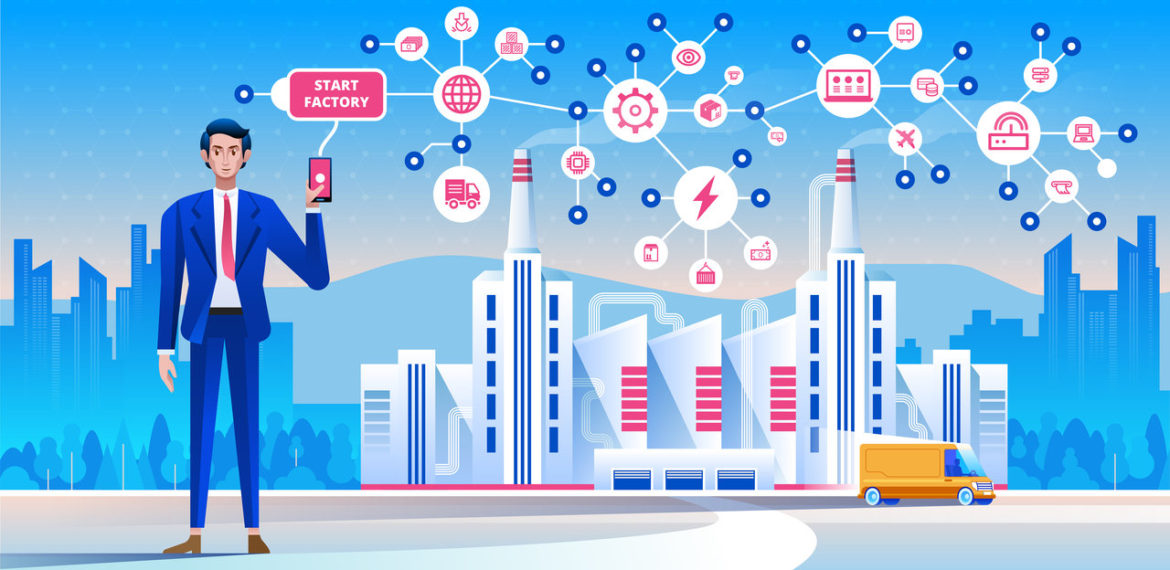
Internet of Things
Internet of Things
As each day progresses, we are inching step by step towards a world which is fully controlled by electronics and which is fully automated. Back when the original star trek was released, it introduced the concept of a tablet like device which became a successful product when Apple introduced the iPad in 2010. IoT (Internet of Things) is a concept which can allow us to fully automate and connect all the things that we see around us. This concept is being embraced worldwide.
How IoT works
IoT basically involves connecting all the things/devices that we use in our day-to-day life to the internet and allow them to be controlled remotely via an application. As an example, it can allow a user to control their thermostat via a mobile application (while they are outside their home) or switch off their lights using some application.
An IoT infrastructure at the bare minimum, contains the following components :-
- Sensors :- Sensors as their name suggests, are components that can be used to sense information. For example, a temperature sensor can sense the temperature whereas a lux sensor can measure luminosity and therefore, can be used to control lighting.
- Gateways :- A bunch of devices and sensors are just local to the network with private IP addresses and no connection to the outside world. They are analogous to your computer machines that are connected to the same home WiFi network. In order to communicate with the outside world, the sensors need an intermediary which can perform protocol translation, security, management etc.The Gateway device is such a device which can perform all the tasks mentioned above. The gateway is similar to your NAT (Network Address Translation) routers. If any IoT device or sensor wants to communicate to the outside world, then it must go through the IoT gateway. Similarly, if anything from the outside world would like to send data to any IoT device, then it must go through the IoT gateway.
- Cloud servers :- This is where all the data processing occurs. The Cloud server applications should contain the following features :-
3.1 Store data securely since it would contain IP addresses and other private information of the users and their devices. They should also contain safeguards to prevent any unauthorized user from accessing that data (Imagine, if a malicious user is able to switch your lights on and off or is able to lower your thermostat temperature)
3.2 Be available 24×7
3.3 Allow secure communication from the outside world
3.4 Allow secure communication to the outside world
3.5 Be fast (slow applications will not really be useful here)
3.6 Be built on a secure infrastructure - Mobile application or some application which can be accessed remotely :- This application would be used by the user to control their devices. It would communicate with the cloud servers in order to implement various functionalities. At the very minimum, the application component should contain a secure login and should cache data in a secure manner on the client device.
IoT concerns
The biggest concerns so far with IoT is security and privacy. A lot depends upon how the IoT infrastructure collects and protects the private data of the users. For example, a light sensor can be used to collect data when it has been turned on and off. From this data, a hacker can deduce a pattern of when the user is at home or when they are away.
The IoT devices can also be converted to “unwilling accomplices” by hackers. This actually happened in October, 2016 when the Dyn DNS provider came under a Distributed Denial-of-Service (DDoS) attack. Later reports confirmed that the Mirai malware was the responsible entity for this. The malware infected millions of IoT devices, forcing them to do a large number of DNS lookup requests. This impacted users all over the world.
Moreover, as we add more and more devices to the IoT network, we become more vulnerable to the “server factors”. Imagine if there is a malfunction in the cloud server applications or something else goes wrong. That can impact even our basic day-to-day activities.
Companies currently working on IoT
There are a lot of companies that are working on IoT infrastructure. Some of the notable ones are :-
- Amazon :- Amazon has built an IoT platform which has services such as AWS Greengrass and AWS IoT
- AT&T :- AT&T launched its M2X service that allows its enterprise users to manage their devices.
- Cisco :- Cisco has launched a variety of IoT services for network connectivity and analytics.
- Google Nest:- They provide IoT infrastructure using their smart thermostats, security cameras and smoke alarms.
- Microsoft :- Microsoft rolled out the Azure IoT suite that allows users to connect their devices and do remote monitoring.
Case Study
At PS3G, we recently helped a client with an IOT project. The idea was to create sensors for footwear for the senior citizens which can detect if they are going to fall or have fallen and send a distress signal to the central office. The central office can then dispatch emergency services. Here the sensor in the footwear communicates with the gateway (which further interacts with the cloud server) to continuously learn and monitor the walking patterns of the person wearing it. The cloud server has intelligence built into it which grows over time.


